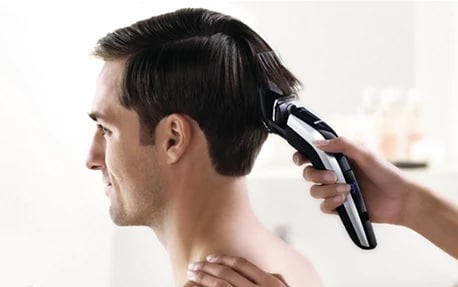
How to grow a mullet: A guide

Can men dye hair? Of course! And loads of men are doing it. If you’re interested in trying out a completely new colour or just touching up the grey patches, read on for our guide to all things hair dyeing, from allergy spot tests, to how to dye your own hair and how to dye a beard at home.
Before we get into the details of how to dye hair, you’ll want to decide what kind of dye you’ll be using. The colour is up to you, but for a more natural look, it’s a good idea to stay within a couple of shades of your usual hair colour. The next question you’ll want to consider is whether you want a temporary or permanent dye. Have a read of these important considerations before you put anything near your hair:
Any hair dye you buy is likely to come with a leaflet. This isn’t just there to take up space in the box. Take a look at the leaflet and, if there are any safety instructions, take them seriously. A lot of hair dyes contain paraphenylenediamine, or PPD, which can cause an allergic reaction in some people. The risk is higher if you’ve ever had a black henna tattoo.1 If you’re using permanent or semi-permanent hair dye, the NHS recommends doing a patch test, even if you’ve used the brand before. If the dye you’ve purchased has come with a leaflet or information sheet, this might contain specific instructions for how to carry out an allergy test. It’ll usually involve applying a small amount of dye to your skin, either behind your ear or on the inside of your elbow, and leaving it for a day or two. If it burns or develops into a rash, you shouldn’t use that dye.
The key for how to dye your own hair, for men or for women, is to follow the instructions that came with your dye. Different types and brands of dye might have specific requirements to help you get the best results and remain safe. Different dyes need to be left in your hair for different lengths of time, for example. Thrown your instructions away with the box? The manufacturers may publish the instructions for specific dyes on their websites, so it’s worth a look. Now that you’ve got the instructions to hand, here’s our guidance on how to dye men’s hair. If you’re happy with the way it’s turned out and want to keep the colour from fading for as long as possible, there are a few things you can do: take warm showers rather than hot ones, avoid spending too long in direct sunlight, and use hair products designed specifically for dyed hair.
You’ve learnt how to dye your own hair, but the hair on your head is just the beginning! If you don’t know how to dye your beard as well, your hair and beard could end up being completely different colours. It's a look that can work, but it might not be the look you’re going for, so let’s talk about how to dye a beard at home. When learning how to dye a beard, the first thing to understand is that beard hairs aren’t the same as the hair on your head. Generally, beard hairs are generally thicker and coarser than the hairs that grow on your scalp.2 As such, regular hair dye might not give the best results when used on your beard. A dye specifically designed for beards might be the way to go. On the whole, though, the method for how to dye a beard is a lot like dyeing your hair. Mix the dye according to the instructions, apply it evenly, leave it, and then wash it off. To get your beard looking even better, give it a touch-up with a flexible shaver and trimmer like the OneBlade Pro.
Can men dye hair on their own? Absolutely, but sometimes it’s easier to seek someone else’s help. If you’re still uncertain about how to dye men’s hair, consider visiting a professional. Dyeing your own hair is cheaper and more convenient, but if you want to make sure you end up with an even final result, your best bet might be a salon or your barber. You’re first foray into at-home hair dying was a huge success and now you’re wondering what else you can do at home. Why not check out our dedicated guide all about how to cut your own hair? Sources 2 Why do so many non-ginger men have ginger beards?, BBC Science Focus
OneBlade Pro 360
Face and Body
QP6652/30
OneBlade Pro 360
Face and Body
QP6552/30
OneBlade Pro 360
Face and Body
QP6542/15